As digitization started to take hold, there were “big box” offerings from companies like Ariba, Workday, and Oracle for business enterprises. These products power human resources, finance, and selected supply chain functions. But because they were built to cover many different business activities, there was a level of design compromise built in.
To meet the needs of supply chain organizations for products without such compromises, point solutions started popping up. Targeted at specific bottlenecks or problem areas, point solutions are limited in their breadth, but strong in depth. Whether you need to improve supplier selection, cash management, or sustainability performance, there is a specialized product that can help you. And it is a supplement, not a replacement, for whichever legacy system is in place.
In light of the expanding array of specialized offerings, the latest procurement stack map published by Dr. Elouise Epstein at Kearney reveals 129 companies with point capabilities ranging from risk monitoring to rebate management. Add those applications that focus on other supply chain functions and the number grows. Any business can only overlay a handful of these; there are just too many specific products to implement them all.
In response to the increase, software-as-a-service (SaaS) providers are broadening what they offer and providing flexibility for customers who may not want, or be able to afford, transformation across each facet of the supply chain.
Ask Cloud Wars AI Agent about this analysis
Exploring Generix’s Offerings
Consider Generix Group, a business with a goal of supply chain digitization “from cargo to fridge” — covering trade flows, information flows, and financial data flows. It takes the concept of “end-to-end” and seeks to empower businesses by addressing three main areas:
- Warehouse Management
- Supply Chain Performance Improvement
- Multi-Company Collaboration and Integration
Specific applications fit under each of these categories. Some are basic, like time management, request for quote (RFQ) centralization, or accounts payable (AP) automation. Its sweet spot: warehouse management, where the SOLOCHAIN™ WMS gets high marks for implementation from customers in the Gartner Warehouse Management System (WMS) Voice of the Customer grid. It offers the flexibility to run applications in the cloud or on-premise.
Although a press release from Generix references “…mak[ing] the most of massive data management (machine learning, AI, and Blockchain) and applied technological research,” that’s not as prominently featured on its website. Unlike AWS Supply Chain or Microsoft Dynamics 365, the company isn’t touting how it’s leveraging the digital tools.
Generix could do more to show website viewers how it’s uniquely leveraging digital capabilities for better results than customers could obtain elsewhere. For instance, it mentions cloud, analytics, robotic process automation (RPA), and deep learning on the same page with truck fill rate optimization, but one has to hunt for examples like this.
In November, Generix acquired DDS, a French company with 10 million euro turnover. The DDS sweet spot is transportation management, a function not already covered in the other Generix verticals. So, it’s a good complement that allows Generix to cover a bigger slice of the supply chain.
In a Gartner survey, 100% of customers said they’d recommend Generix, the highest score of the companies evaluated. One can also see opportunity areas in the responses: 80% of the clients who provided input were under $1 billion in size and skewed toward North America and EMEA. This is markedly different from most of their competitors that skew toward larger enterprises.
Final Thoughts
Over the last six months, Generix has announced a new chief product and innovation officer, a chief revenue officer, a president of Generix Group, and a chief marketing officer along with the DDS acquisition. Perhaps that’s a sign of a push toward larger customers and new geographies.










